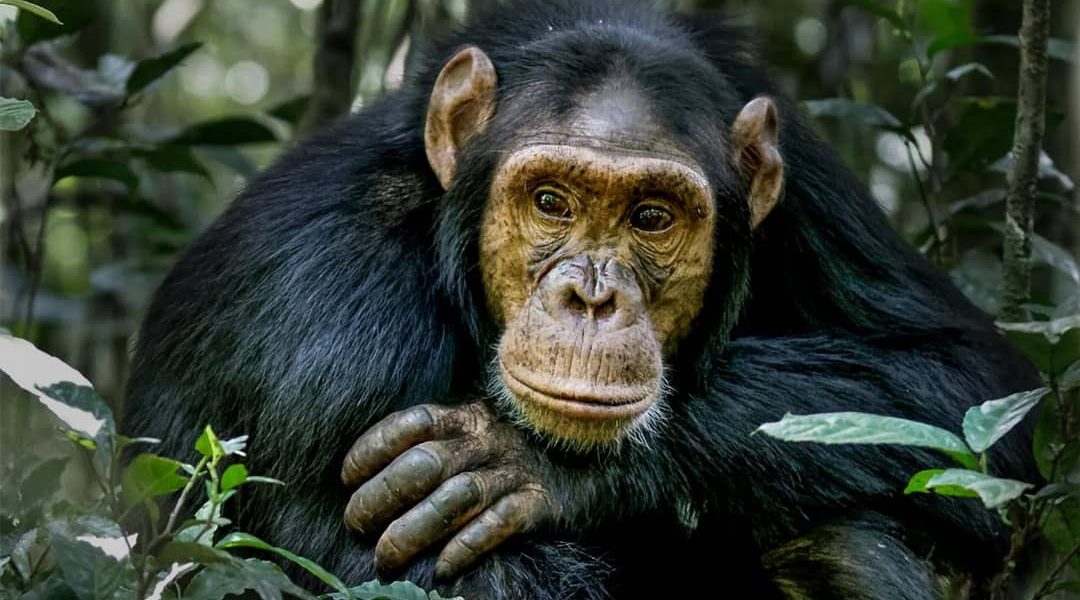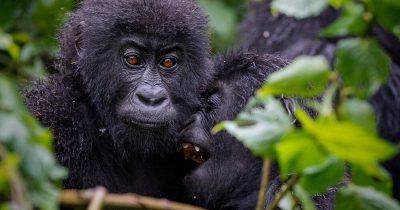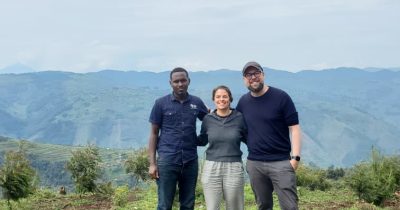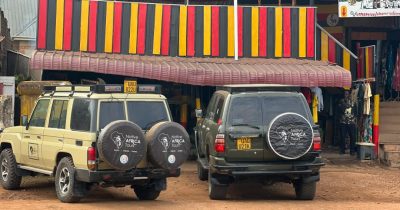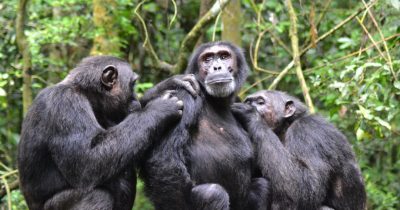Chimpanzee Habituation in Budongo Forest Reserve
Chimpanzee habituation in Budongo refers to a chimpanzee’s gradual reduction in response to a specific stimulus, especially visitors, after repeated exposure, potentially leading to increased tolerance and closer interactions. In the context of these Great Apes, these creatures become less reactive to a specific situation after repeated exposure. Before these great apes are fully introduced to humans, they have to undergo some “training” to become accustomed to human presence; hence, they won’t get scared when visitors visit.
With this experience, embark on a once-in-a-lifetime chimpanzee tour and immerse yourself in the unique and fragile World of Giant Apes, our closest relatives in the animal Kingdom. Since the early 1990s, the 825-square-kilometer Budongo Forest has been a hub for the habituation of these Great Apes to human presence, all while preserving their natural behaviors. Habituation of chimpanzees is a long process that can take two to fifteen years, aiming to foster a harmonious coexistence.
Could you tell me why habituation is necessary?
Understanding chimpanzee habituation is significant for responsible gorilla trekking and forest conservation efforts, as it can help minimize the disturbance of these Great Apes.
This process is vital for reducing stress and behavioral changes. While some chimpanzees might appear unconcerned, habituating can mask underlying stress and potential behavioral changes. However, regardless of whether they’re habituated, keeping a safe distance from the Great Apes is essential, especially when showing signs of distress.
This process also reduces natural behavior and potentially changes foraging behavior and social interactions.
Chimpanzee habituation is done by a team of researchers, trackers, Park guides, Rangers, and conservationists, and while in Budongo Forest Reserve, you can experience the process after a period of mock tests. In this case, visitors have a once-in-a-lifetime opportunity to spend time with them. Chimpanzee habituation tours in this protected area can occur all year round.
Unlike standard chimpanzee treks, where you’ll visit a fully-habituated chimpanzee community, you will see a semi-habituated community during the Habituation Experience. Also, considering their somewhat timid nature, you have more time with these great apes; hence, you’ve spent almost all day in the forest.
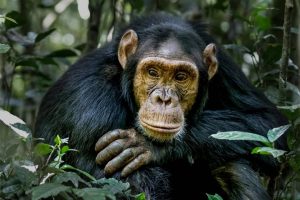
History of Habituation in Budongo Forest Reserve
For this once-in-a-lifetime experience in Budongo Forest Reserve, you can visit the Waibira community, whose habituation started in 2011. These endangered creatures live in a highly complex social World and must defend their territory from neighboring chimpanzee communities. This can be done through patrolling their boundaries and even escalating into aggressive fighting. Simultaneously, the female chimpanzees leave their natal group and enter a new community on approaching maturity, and this sometimes requires walking a delicate social tightrope. Their behavior will be studied by habituating chimpanzees. With over 76 individuals named in the Waibira chimpanzee community, it is estimated to have between 100 and 120 individuals, with over 30 mature males. The home range of this chimpanzee community is about 10.4 square kilometers, and systematic long-term data collection began in April 2011 and has succeeded in several research projects.
During the Habituation Experience, you will spend a whole day alongside experienced Ranger guides, Park Rangers, and Researchers, shadowing them as they go about their day-to-day routines. From dawn to dusk, you will get the chance to get up close and personal with them firsthand, to witness their incredible behavior and learn about their jaw-dropping human-like behavior.
Cost of Chimpanzee Habituation Permits in Budongo Forest Reserve
The chimpanzee Habituation permits for Budongo Forest Reserve cost only $230 per person for foreign non-resident visitors, $160 per person for foreign resident visitors, and $90 per person for Ugandan citizens. These rates exclude Park entry fees for Murchison Falls National Park, which should be paid.
When to go for the Chimpanzee Habituation Experience in Budongo Forest Reserve
While Chimpanzee Habituation is possible all year round, it is NOT available during Budongo Forest Reserve’s peak season (July, August, September, and November). This means you can enjoy this once-in-a-lifetime experience during the rest of the months- January, February, March, April, May, June, October, and December.
Packing List for Chimpanzee Habituation in Budongo Forest Reserve
Loose-fitting clothes
Budongo Forest Reserve is generally hot and humid, and can sometimes get hot and humid with very damp conditions. The last thing you want to wear is clothes that cling to you. Long-sleeved shirts are handy in Budongo Forest to protect from the sun and keep pesky mosquitoes away.
Warm layer
Despite being known for its heat, Budongo Forest can sometimes feel cool, especially in the mornings. For this reason, it is best to pack a thin, long-sleeved layer to keep you warm during cooler mornings.
Sun protection
Please make sure you are ready with good protection. The sun in Budongo Forest Reserve can be powerful. While the jungle canopy of Budongo Forest offers protection, it is still worth being prepared, so a sun hat is handy.
Insect Repellent
Budongo Forest Reserve is home to endless insects, many of which like to bite. This can put many people off from exploring the jungle, but for many primate enthusiasts, it is part of the magic of this outstanding ecosystem. While wearing long-sleeved and loose-fitting clothing will help to protect you, it is essential to wear insect repellent to keep those pesky bugs away.
Protective Footwear
The Budongo forest floor is home to many creepy crawlies, from biting ants to poisonous spiders. When undertaking these guided chimpanzee habituation tours, wearing shoes that protect you is essential. Sturdy hiking boots are generally sufficient, but many chimpanzee tour guides wear rubber rain boots.
Re-usable Water Bottle
It’s a no-brainer that plastic is terrible for many reasons, including the harm it causes to local environments like Budongo Forest Reserve. The general rule of thumb in the jungle is to “leave no trace”. This means that anything you take with you must return with you. While most Safari Lodges provide garbage disposal facilities, they’re often limited, and the last thing they need is thousands of plastic bottles to deal with.
Rain jacket or Poncho
Budongo Forest Reserve is one of the wettest places in Uganda. Even if you visit in the dry season, it is possible to encounter fierce rain storms or lighter rain showers. In all honesty, the rain can sometimes be so intense that rain jackets can’t fully protect you. A poncho is an excellent alternative, as it also protects your backpack.
Essential Toiletries
There are limited or no shops or pharmacies around Budongo Forest Reserve, so you should be sure to pack anything you might need, such as deodorant, toothbrush and toothpaste, shampoo and conditioner, hand and body lotion, body soap, shower gel, after-sun, hand sanitizer, hair comb/brush, and others.
Pair of binoculars
These are essential for the avid birdwatcher. Primate enthusiasts and other visitors should bring at least one pair to share with their group.
Backpack
A small waterproof backpack will protect anything sensitive to unfavorable weather or humidity—cameras, phones, passports, cash, snacks, and even drinking water.
Where to stay during your Chimpanzee Habituation tour in Budongo Forest Reserve
Suppose you’re looking for a place to stay before or after your Chimpanzee Habituation Tour in Budongo Forest Reserve. In that case, you should consider Boomu Women’s Group Bandas, Paraa Safari Lodge, Pakuba Safari Lodge, Red Chilli Safari Camp, or Heritage Safari Lodge.
Conclusively, the Chimpanzee Habituation in Budongo Forest Reserve is a thrilling experience that allows visitors to explore Great Apes as they are fully introduced to humans and learn about their human-like behavior and fragile forest ecosystem.
